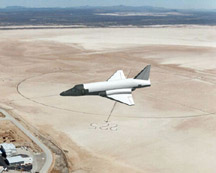|
Space
Tourism
Sub-orbital
Space Tourism Market Larger than Expected

Pioneer
Rocketplane
The Pioneer
Rocketplane XP would provide
sub-orbital flights for space tourism and other applications.
A poll
of 450 wealthy individuals has found surprisingly high interest
in short sub-orbital flights.
Building a high altitude sub-orbital vehicle
would be far cheaper and quicker for private launch firms
to accomplish than orbital vehicles.
However, the companies need a market of sufficient
size to convince investors to give them the $25 to $50 million
needed to develop a fleet of reliable and safe sub-orbital
RLV's.
Sub-orbital space tourism
could very well be that maket.
Passengers traveling to 100km or so in altitude
would experience weightlessness, see the curvature of the
earth and the black, starry sky of space. Plus they would
be among the few to feel the kick
in the pants acceleration of a rocket ride.
The trip would no doubt be combined into a
package that included a week or so period of training and
buildup to the flight.
There has been skepticism, however, about
the size of the market for sub-orbital space tourism. The
flights would be very short - 15 minutes to an hour depending
on the system - and provide less than 5 minutes of weightlessness
at the top of the arc.
Nevertheless, the flights would still be quite
expensive.
The price must pay for the development of
the vehicles and their operations. Space
Adventures, as reported here many times, will charge $98,000
for its suborbital
package (which will not offer actual flights until a vehicle
is developed by someone else.)
Even though Space Adventures has reported
that over 100 people have placed deposits for its suborbital
vacation package, this anecdotal information hasn't been sufficient
for launch companies to convince potential investors to provide
the bucks to start building ships.
Tito and Shutteworth paid a lot for their
trips but they got to spend a whole week in space.
At a recent lecture, Dennis Tito, in fact,
said he considered sub-orbital flights to be mere "joyrides"
and he didn't see a market for them.
So to convince the skeptics, a serious, professional
survey has been needed to measure the potentital market with
enough information to get a real picture of its size.
|



